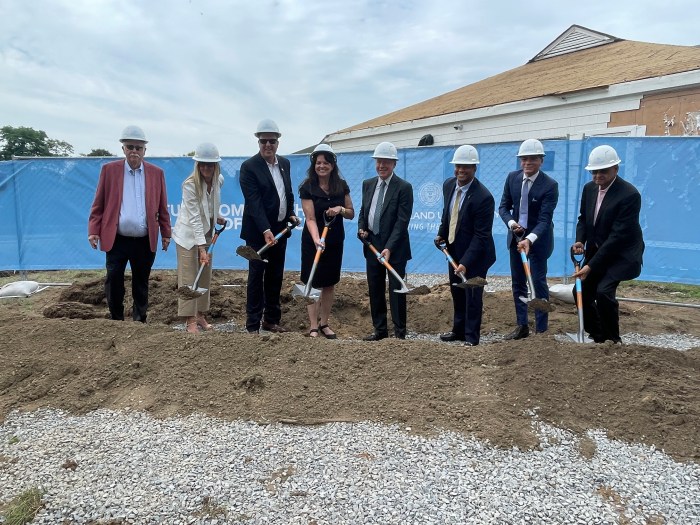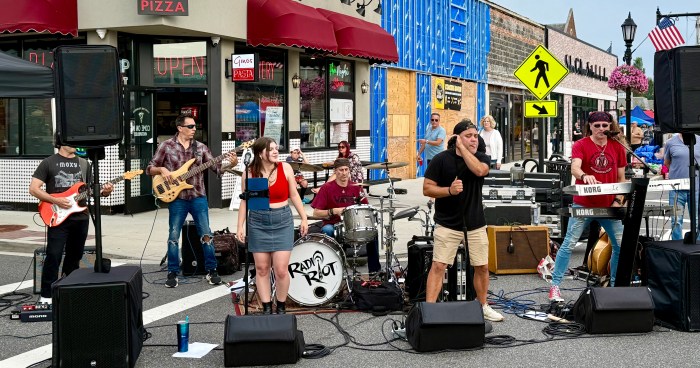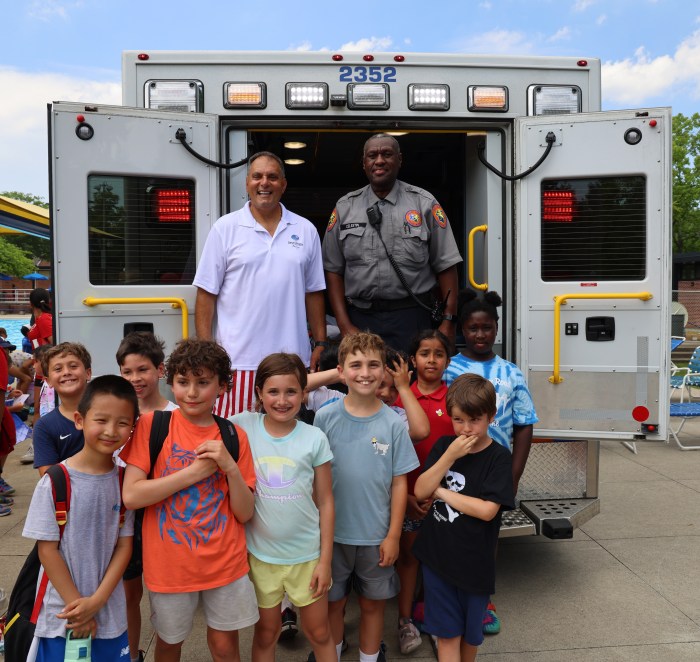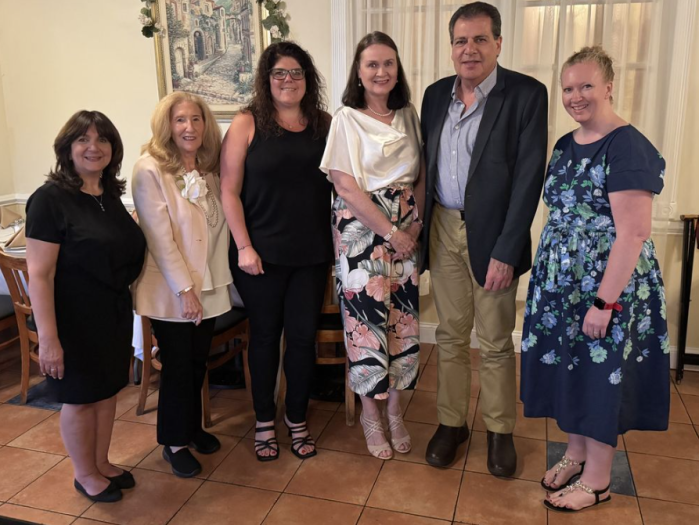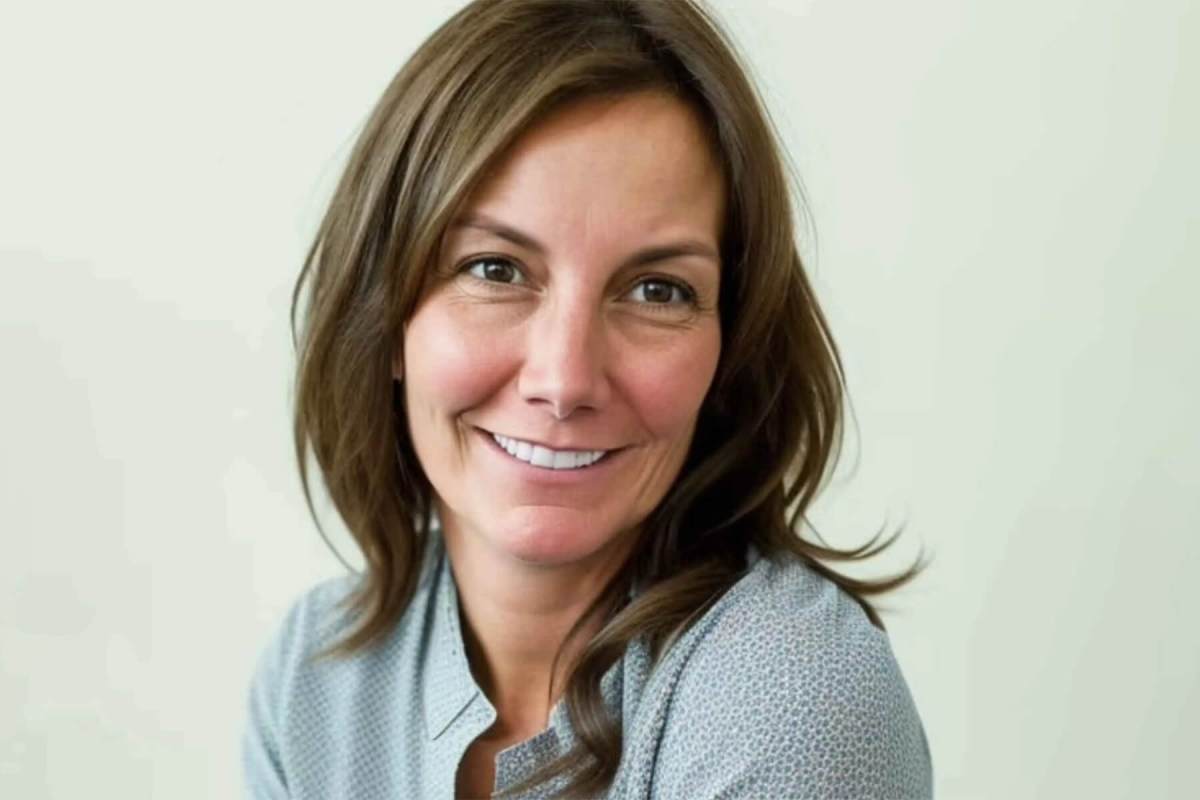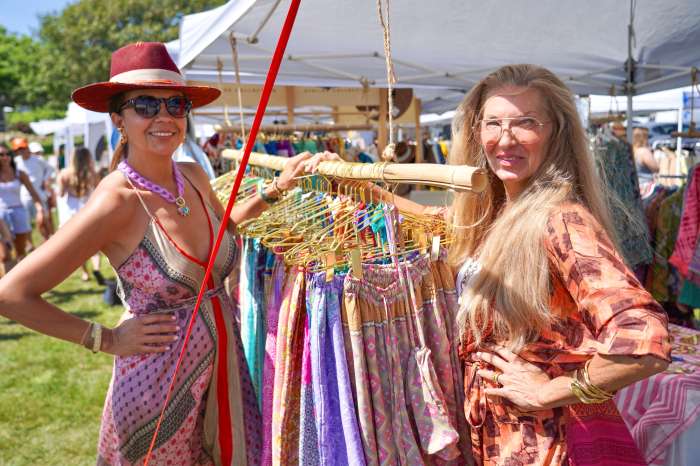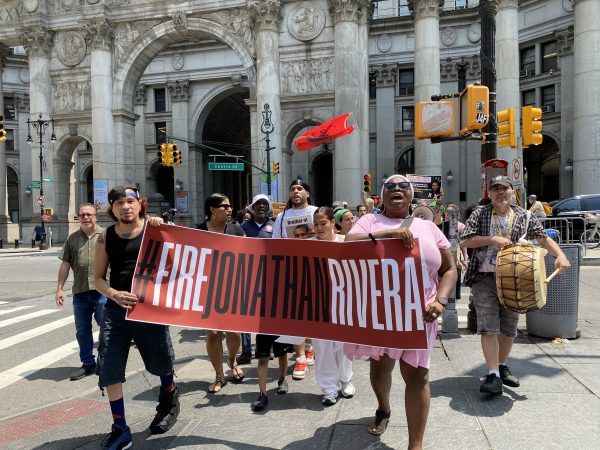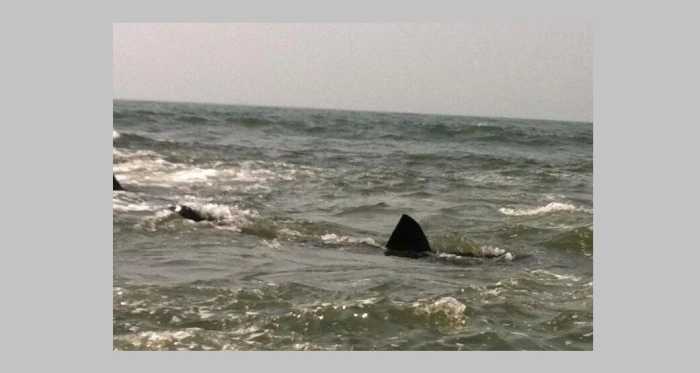Indigenous people in New York have not thrown their support behind the Massapequa School District and its continued fight to keep the use of its indigenous name, mascot and logo.
John Kane is a Mohawk activist and member of the state Department of Education’s Indigenous Mascot Advisory Council who lives in the Cattaraugus Territory, roughly 30 miles from Buffalo. He is a podcast and radio host who advocates for Indigenous rights.
“Using people for mascots is wrong,” Kane said. “I don’t know how you can use a stereotypical image of any group of people and not realize that it’s discriminatory.”
Kane argues that schools using indigenous imagery teach kids improperly about Native Americans, their history and way of life. He says it allows people to take on a false sense of identity and that there is a misrepresentation of Native American culture.
“All of these mascots usually use some sort of 18th-century depiction of what white people think we were, and not necessarily who we were,” he said.
As a member of the state Department of Education’s Indigenous Mascot Advisory group, Kane helped create guidelines for the department to use when working on prohibiting school districts from using Indigenous names, mascots and logos.
Kane had been advocating for name changes for many school districts for years, including his former high school, Cambridge Central School, which had previously been referred to as the “Indians.” After several public legal battles, the district eventually changed its name. Kane said he preferred to battle this issue with the Department of Education rather than with state legislatures as he wanted to “stay clear of all the political culture war nonsense.”
And in terms of the Massapequa School District, Kane called out several pieces of misinformation.
“Massapequa uses a Plains Indian headdress for the logo even though the Algonquin would have never even looked like that,” he said.
The initial inhabitants of the land incorporated by modern-day Massapequa spoke an Algonquin dialect. Massapequa is one of a number of Long Island communities to have its name derived from an Indigenous people. The Massapequa people were not connected to the Plains Indians.
“If you use words like ‘chief,’ it’s always associated with this noble savage and this fierce, aggressive mascot,” Kane said.
Kane said the term “chief” often leaves out peacemaking and leadership powers when used as a mascot or team name.
The U.S. Department of Education launched a probe into New York State’s DOE and Board of Regents for a reported violation of Title VI of the Civil Rights Act on Friday, April 25.
The announcement said the Office for Civil Rights will look into whether the state’s threat to withhold funding if the Massapequa School District does not drop its Native American mascot constitutes discrimination on the basis of race and national origin.
The probe comes shortly after President Donald Trump declared his support for the Massapequa School District in a social media post.

The Massapequa School District’s mascot is the chief, including a district logo with the letter “M” adorning a Native American headdress. A recent New York Board of Regents policy barred the use of the mascot and logo, which the district has fought.
The Board of Regents unanimously voted in April 2023 to ban the use of Native American mascots, team names, logos and depictions. Schools were originally tasked with establishing a new mascot by the end of the 2022-23 school year, but this was later changed to June 2025.
The policy was also extended to prohibit the use of Native American iconography in school names and logos.
Court documents said the Massapequa Board of Education did pass a resolution to eliminate their use of indigenous names, mascots or logos by the end of the 2024–2025 school year.
The Massapequa School District, alongside the Wantagh, Connetquot and Wyandanch school districts, filed a lawsuit challenging the state’s policy. In March, a federal judge ruled in favor of the state’s Board of Regents and dismissed the lawsuit.
In early April, Nassau County Executive Bruce Blakeman thanked Trump for his and the government’s support for Massapequa.
According to the 2023-24 enrollment data, the Massapequa School District had just seven of its 6,482 students who were indigenous, marking 0.1% of the student population.
The Native American Guardians’ Association is a group of American Indians who support the preservation and honoring of Native symbols. The group filed a complaint with the U.S. Department of Education’s Office of Civil Rights, stating that the state is violating federal civil rights law by forcing the Massapequa School District to eliminate its “Chiefs” mascot based on its association with Native American culture.
“The Native American Guardians Association stands firm in asserting that the preservation of Native themes and imagery in New York public schools is not only a matter of cultural dignity but a fundamental civil right for all students. We call on federal and state leaders to help us defend these dwindling expressions or our presence and contributions,” Frank Blackcloud, the vice president of NAGA, said.
But Kane disagrees, saying that “only the people driven from their homelands and almost completely eradicated are now ‘honored’ by being used for the amusement and entertainment of predominantly white folks.”
And other Indigenous people share a similar thought.
“The most important reason is that Native Americans find the use of these mascots insulting and, in some cases, harmful because of the stereotypes they project,” explained Sadanyah FlowingWater, a founder and executive director of the nonprofit World Alliance of Indigenous Peoples, said in 2020.
The Haudenosaunee, an indigenous confederacy of six nations which includes the Mohawk people, said they are against public schools using indigenous names or imagery.
“The Nation regards the depiction of natives as mascots defamatory to our people,” the Nation says on its website.
Kane said the vast majority of mascots and names associated with school sports teams are animals, something that he says dehumanizes Indigenous people as they are put on par with animals.
And many have argued this same debate on a professional level.
The Kansas City Chiefs of the NFL were named for Harold Roe Bartle (who was nicknamed “Chief”), the mayor of the city in the early 1960s who helped Kansas City bring in a professional football team, according to the team’s website.
“While the origin of the team’s name has no affiliation with American Indian culture, much of the club’s early promotional activities relied heavily on imagery and messaging depicting American Indians in a racially insensitive fashion,” the team said. “Over the course of the club’s 60-plus-year history, the Chiefs organization has worked to eliminate this offensive imagery and other forms of cultural appropriation in their promotional materials and game-day presentation.”
The Chicago Blackhawks of the NHL and Atlanta Braves of MLB have also been scrutinized for their identities.
Meanwhile, some teams have modernized themselves with identity changes. The Cleveland Guardians changed their name from the “Indians” in 2019, a name that had stood for more than a century.
The Washington Commanders had been named the “Redskins” for 87 years. The team went nameless for two years before picking its current name. The Commanders use a “W” logo rather than the team’s former symbol, which featured a Native American figure.
The NCAA adopted a policy in 2005 prohibiting colleges and universities from displaying “hostile and abusive racial/ethnic/national origin mascots, nicknames or imagery at any of the 88 NCAA championships.” This led to many high-profile athletic schools changing their names, while others were given exceptions.
There is no timetable for how long the government’s probe into the state Education Department and Board of Regents may take.





